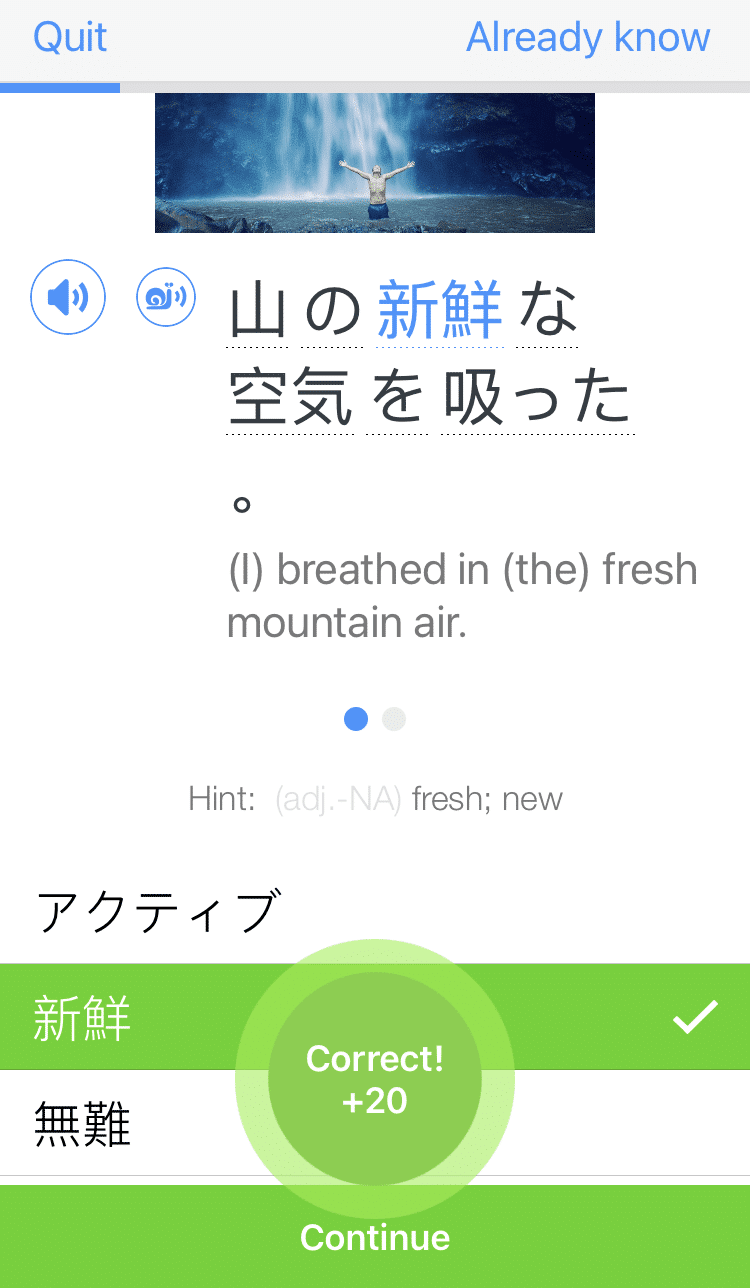6 Easy Ways to Talk to Japanese People Online

The whole point of learning Japanese is to be able to communicate with native speakers. And if there aren’t any in your area, I’ve rounded up several online resources that allow you to practice with real people, including my all-time favorite HelloTalk.
To find out which one will work best for you, I’ve described how each one works, along with the pros and cons.
Check out these six tools for practicing Japanese speaking online.
Download: This blog post is available as a convenient and portable PDF that you can take anywhere. Click here to get a copy. (Download)
1. HelloTalk

One of my personal favorites, this app has the potential to become a very valuable practicing tool for most foreign language learners. You can use it to speak Japanese online as well as to improve your grammar, vocabulary and, of course, pronunciation.
The app works much like many popular social networks. The only difference is that its focus is on language learning. You choose a language you wish to learn and your native language and then you can start posting photos, stories or audio recordings.
Native speakers who wish to learn your language will see those posts and correct your errors. In return, you can do the same for them in your native language.
The program can also help you find a language exchange partner for more one-on-one attention. You can chat or speak to this partner for plenty of practice.
HelloTalk is a goldmine of cringeworthy posts, but it’s also extremely useful for improving your speech and finding new friends. I actually found my brother-from-another-mother there and a few more other nice people who helped me considerably with my studies.
The Pros
- The app is easy to use since it has a very simple interface.
- It has a lot of users, so you can find friendly individuals pretty quickly.
- With the implemented translator and beginner courses, it’s a great choice for complete beginners who know very little to no Japanese.
- When it comes to actually speaking Japanese, the most important feature is the availability of voice calls and audio recordings. You can record a message and include it in your profile or post and receive feedback from native speakers.
The Cons
- Some users won’t respond to your messages at all, or they’ll respond initially and then disappear after you exchange a couple of texts or audio.
- The translator is far from perfect, so you shouldn’t trust it completely, even though it can be helpful if you’re a beginner.
- If you’re only learning Japanese, you’re fine. But if you’re interested in learning more than one language, there’s a paywall.
2. Line

Line is like a fusion of Viber and Facebook (but less annoying), predominantly used by Japanese people.
It’s not exactly a language-learning app, so it does require quite a high skill level to be able to use it with regular native speakers.
That said, this app is by far the best one for speaking Japanese because of the sheer volume of native Japanese speakers on it.
So when you meet a potential chat partner, just say hey, what’s up, can I have your Line ID?
The Pros
- Line offers a lot of different official accounts for you to follow. From music bands and TV celebrities to the cooking shows that I myself enjoy so much. You can improve your skills by watching live streams, reading posts and commenting on them.
- Video and voice chat work very smoothly and are great for improving your speaking game.
The Cons
- Although you can find friends by sending requests to someone who follows the same accounts you do, Line isn’t quite made for that. It’s used for staying in touch with people you met on different platforms, or in person. That means it’s not the best standalone learning app.
3. Instagram

Yeah, you can actually use Instagram to speak Japanese. Don’t think of it as a content sharing platform but instead, consider it as being a tool for finding Japanese friends.
You can seek them out by searching different hashtags—like your hobby, but in Japanese—or by checking out the followers page of your favorite Japanese-language accounts.
Use it together with Line and you’ll get a very helpful speaking practice combo.
The Pros
- You can make friends organically on this app, by checking out some hashtags you like or your favorite official accounts. You’ll automatically have something in common, which is a great plus for easy communication!
- Since you can send voice recordings in messages, you can also practice speaking Japanese, not just typing.
- Watching live streams can help you adjust your ears to native Japanese speech.
The Cons
- The very nature of the app is one of its biggest flaws: It’s distracting. You can quickly forget why you’re there and keep watching meaningless stuff for hours.
- Since this isn’t a language-learning app, Instagram users aren’t always looking for friends. Some just want to comment on or stay up to date with their favorite Insta-celebs, and they’re not looking for a conversation. Because of that, finding friends can sometimes be challenging.
4. Langmate

This program is all about being straightforward and simple. Once you make your profile, you’re given a list of people who you might want to talk to. Decline them and move on to different users, or accept them and wait until they accept you as well to become connected.
Then, you can text them or send them a voice recording and practice Japanese with their help.
The Pros
- This app is advertised as being specifically designed for Japanese language learners or for people who want to meet friends from Japan.
- The app connects you with your new friends very quickly.
- Most users speak English, so it’s also beginner-friendly.
The Cons
- Some users consider it a dating app so it can get a bit frustrating at times.
- You can’t make an account on the app. Instead, you connect the app with one of your social networks and create your profile by adding some additional info about yourself.
5. Tandem

Once connected, you can engage in text conversations or exchange voice recordings to practice Japanese with your language partner.
The Pros
- The app efficiently connects users with new language partners.
- Most users are proficient in English, making the app beginner-friendly.
The Cons
- Some users may view the platform as more geared towards dating, leading to occasional frustration.
- Account creation requires linking the app to a social network, and profile setup involves adding supplementary information.
6. Lingbe

Engage in text conversations or send voice recordings to practice Japanese with your language exchange partners.
The Pros
- Great design and the app works wonderfully.
- The app excels in swiftly connecting users with new language partners.
The Cons
- Similar to other language exchange apps like Tandem, Lingbe may be perceived by some users as more inclined towards dating, leading to occasional frustration.
- Account creation involves linking the app to a social network, and users are required to supplement their profiles with additional information. Some people may want to avoid this.
As you can see, all of the resources on this list of ours have their virtues and flaws. Some work better for beginners while others suit experts more. If you want to practice your Japanese speaking online, we recommend that you try all four out and see which one (or ones) work best for you.
And if you need a bit more help in your conversations, you can always listen to and watch native content to top up your speaking abilities. For example, watching an anime series on Netflix can guide you when you’re talking about last night’s episode, while subtitled Japanese media clips on the FluentU program can help you with conversational phrases and pop-culture references.
FluentU takes authentic videos—like music videos, movie trailers, news and inspiring talks—and turns them into personalized language learning lessons.
You can try FluentU for free for 2 weeks. Check out the website or download the iOS app or Android app.
P.S. Click here to take advantage of our current sale! (Expires at the end of this month.)

Now go and speak Japanese like you’ve never spoken it before!
Download: This blog post is available as a convenient and portable PDF that you can take anywhere. Click here to get a copy. (Download)
And One More Thing...
If you love learning Japanese with authentic materials, then I should also tell you more about FluentU.
FluentU naturally and gradually eases you into learning Japanese language and culture. You'll learn real Japanese as it's spoken in real life.
FluentU has a broad range of contemporary videos as you'll see below:

FluentU makes these native Japanese videos approachable through interactive transcripts. Tap on any word to look it up instantly.

All definitions have multiple examples, and they're written for Japanese learners like you. Tap to add words you'd like to review to a vocab list.

And FluentU has a learn mode which turns every video into a language learning lesson. You can always swipe left or right to see more examples.

The best part? FluentU keeps track of your vocabulary, and gives you extra practice with difficult words. It'll even remind you when it’s time to review what you’ve learned. You'll have a 100% personalized experience.
Start using the FluentU website on your computer or tablet or, better yet, download the FluentU app from the iTunes or Google Play store. Click here to take advantage of our current sale! (Expires at the end of this month.)







